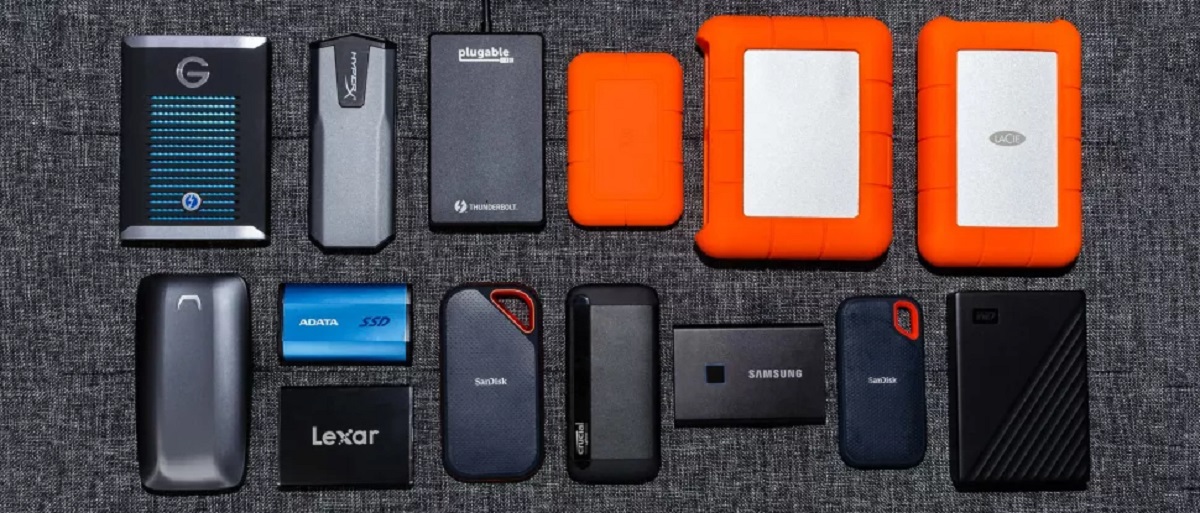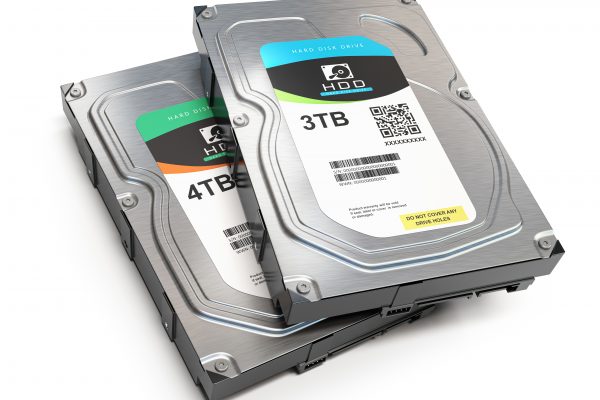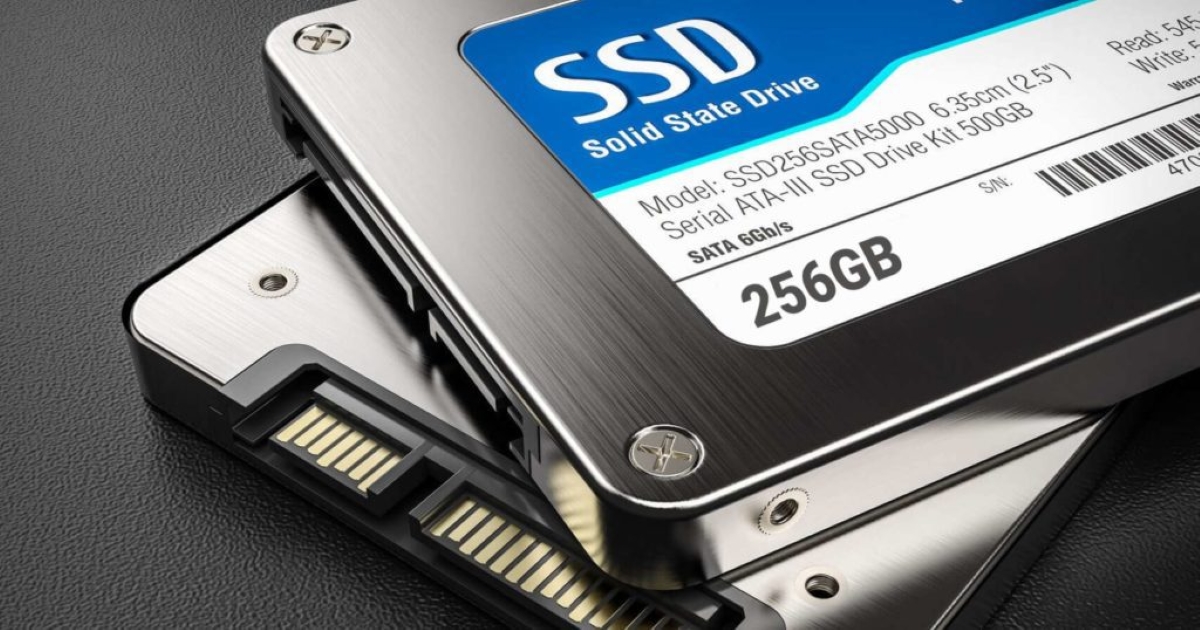

Articles
How Much Is 2 Tb Of Storage
Modified: January 21, 2024
Looking for data storage? Find out the cost of 2 TB storage and choose the best option for your needs. Compare prices and features now.
(Many of the links in this article redirect to a specific reviewed product. Your purchase of these products through affiliate links helps to generate commission for Storables.com, at no extra cost. Learn more)
Introduction
Welcome to the world of data storage! As technology continues to advance, the need for storage solutions becomes increasingly important. Whether you’re an individual looking to store your personal files or a business seeking to manage large amounts of data, the question of how much storage you need may arise. In this article, we’ll delve into the concept of storage and specifically discuss the capacity of 2 TB (terabytes), shedding light on its significance and practical applications.
Understanding how storage works is essential to comprehending the value of 2 TB. Storage refers to the capacity to store and retrieve digital information, such as files, documents, photos, videos, and more. It plays a crucial role in preserving and accessing data efficiently. From personal computers and external hard drives to cloud-based services, the options for storing data are vast.
So, what exactly is a terabyte? To put it simply, a terabyte is a unit of digital information equal to 1,000 gigabytes (GB) or one trillion bytes. With advancements in technology and the exponential growth of data, terabytes have become the standard unit for measuring large-scale storage capacity. They provide an ample amount of space for files, making it suitable for a wide range of applications.
Now, let’s explore the capacity of 2 TB. A 2 TB storage capacity can hold an immense amount of data. To put it into perspective, it can store approximately:
- 500,000 high-resolution photos
- 250 hours of HD video
- 60,000 songs
- 6 million e-books
By understanding these figures, you can appreciate the vast capabilities that 2 TB of storage offers. Whether you’re a photography enthusiast, a videographer, or a music lover, this amount of storage ensures that you have more than enough space to accommodate your files and media.
Furthermore, 2 TB can accommodate the storage needs of many businesses and organizations. From databases and archives to backups and data analysis, this capacity allows for efficient management of data, empowering businesses to operate smoothly and effectively.
However, it’s important to note that the actual usable capacity of 2 TB may vary. Manufacturers often advertise storage capacities in decimal form, while computers typically calculate storage using binary values. This results in a discrepancy, where the actual usable space may be slightly lower than the advertised capacity. Additionally, the formatting of the storage device and the file system used also affect the available space. Hence, it’s advisable to take these factors into account when determining your storage requirements.
In the next sections, we will explore how 2 TB compares to other storage options, its applications in various scenarios, and best practices for managing this amount of storage effectively. So, buckle up and get ready to dive into the world of 2 TB storage!
Key Takeaways:
- 2 TB of storage can hold 500,000 high-resolution photos, 250 hours of HD video, 60,000 songs, or 6 million e-books, making it suitable for a wide range of personal and business applications.
- Best practices for managing 2 TB of storage include organizing files, utilizing compression, leveraging cloud storage, and regularly backing up data to optimize storage efficiency and ensure accessibility and security.
Read more: How Much Is 1 Tb Of Storage
Understanding Storage
Before delving deeper into the world of storage capacity, let’s take a moment to understand the fundamental concepts of storage itself. Storage refers to the process of storing and retrieving digital information, enabling users to access their data whenever needed. It plays a crucial role in preserving files, documents, media, and other forms of digital content for future use.
Storage solutions can be broadly categorized into two main types: primary storage and secondary storage. Primary storage, also known as RAM (Random Access Memory), is the volatile memory that allows a computer to access and manipulate data quickly. However, primary storage has limited capacity and requires a power source to retain information. That’s where secondary storage comes into play.
Secondary storage includes devices or media used for long-term storage, allowing users to store large amounts of data permanently. Examples of secondary storage devices include hard disk drives (HDDs), solid-state drives (SSDs), external hard drives, network-attached storage (NAS), and cloud-based storage services.
Hard disk drives (HDDs) are the most common form of secondary storage. They use magnetic storage to store data on spinning discs called platters. HDDs provide a cost-effective solution with large storage capacities, making them ideal for personal and business use. However, they may be slower in terms of data transfer compared to solid-state drives.
Solid-state drives (SSDs) have gained popularity in recent years due to their faster read and write speeds. Unlike HDDs, SSDs store data on flash memory chips, allowing for faster access and increased durability. SSDs are commonly found in laptops, desktop computers, and external drives, offering a more reliable and faster storage solution.
External hard drives provide portable storage options, allowing users to easily transfer and access their files on different devices. These drives can be connected to computers via USB or other interfaces, providing additional storage capacity on the go.
Network-attached storage (NAS) is a storage device connected to a local network, allowing multiple users to access and share files from a central location. NAS devices are commonly used in homes and small offices, providing a convenient and efficient way to store and access data from multiple devices simultaneously.
Cloud-based storage services have revolutionized how we store and access data. These services offer remote storage through the internet, allowing users to upload, download, and sync files from anywhere with an internet connection. Providers such as Google Drive, Dropbox, and Microsoft OneDrive offer varying storage plans to meet different needs.
Understanding the different types of storage solutions available helps us navigate through the world of storage and make informed decisions based on our requirements. With the basics of storage covered, let’s move on to exploring the specific capacity of 2 TB and its practical applications.
What is TB?
When it comes to measuring storage capacity, the concept of terabytes (TB) is essential to understand. TB stands for terabyte, which is a unit of digital information measurement. It represents a massive amount of data storage and is often used to quantify large-scale storage capacity.
To put it into perspective, a terabyte is equivalent to 1,000 gigabytes (GB) or one trillion bytes. It’s a mind-boggling number. Just think about how many individual pieces of information can be stored within such a vast amount of space!
With the increasing amount of data being created and consumed in our digital world, the demand for larger storage capacities has grown exponentially. Terabytes have become commonplace in storage discussions, particularly for individuals and organizations dealing with substantial amounts of data.
Terabytes are used not only to define storage capacity but also to measure data transfer rates. For example, if your internet service provider offers a high-speed internet plan with a data transfer rate of 1 terabit per second (Tbps), it means that you can download data at a rate of 1 trillion bits per second.
So, why is the concept of terabytes significant? One of the main reasons is that it allows for the efficient storage and management of large volumes of data. Whether it’s a vast collection of photos and videos, a massive database, or a complete archive of documents, having the capacity to handle terabytes of information is crucial for many individuals and businesses.
Terabytes are commonly used in various industries and fields where data storage and processing are critical. Some examples include:
- Media and Entertainment: Film studios, streaming platforms, and media production companies deal with massive video files that require terabytes of storage to house their content libraries.
- Healthcare: Hospitals, research institutions, and medical imaging centers generate significant amounts of patient data, including medical records, x-rays, and MRI scans, which all require terabytes of storage space.
- Scientific Research: Scientists involved in complex simulations, data analysis, and research projects generate vast amounts of data that necessitate terabytes of storage capacity to preserve their findings.
- Enterprise Data Storage: Large corporations and businesses accumulate extensive volumes of data, including customer records, financial information, and transactional data, which need to be stored securely and efficiently using terabyte-scale storage systems.
As terabyte storage becomes more accessible and cost-effective, it enables individuals and organizations to store and manage their data with ease. Whether you’re backing up important files, building a multimedia library, or keeping extensive records, having the capacity to store terabytes of data offers peace of mind and the flexibility to expand your storage needs as required.
Now that we have a solid understanding of what terabytes are, let’s explore the specific capacity of 2 TB and what it entails in terms of storage possibilities.
How Much is 2 TB?
Now that we understand the concept of terabytes, let’s dive deeper into the specific capacity of 2 TB. To put it simply, 2 TB refers to two terabytes of storage space. But what does that actually mean in terms of the amount of data it can hold?
2 TB is a significant amount of storage capacity and offers ample space for storing various types of content, including files, media, and applications, whether you’re an individual user or a business organization. Let’s break down the storage possibilities of 2 TB to understand its true potential.
When it comes to digital media, 2 TB can store approximately:
- 500,000 high-resolution photos: Whether you’re a professional photographer or someone who loves capturing memorable moments, 2 TB allows you to store a vast collection of high-quality images.
- 250 hours of HD video: For video enthusiasts or content creators, this substantial capacity enables you to store a significant amount of high-definition videos.
- 60,000 songs: Music lovers can store a vast music library with thousands of songs without worrying about running out of space.
- 6 million e-books: For avid readers or students, 2 TB is more than enough to hold an extensive digital library of e-books and educational resources.
These numbers are just a general estimation, as the actual size of files can vary based on compression, resolution, and file format. However, they provide a good indication of the vast storage capabilities that 2 TB offers.
Moreover, 2 TB is well-suited for businesses and organizations that deal with large amounts of data. It allows for efficient storage and access to crucial files, databases, and applications. Whether you’re managing customer records, financial data, or multimedia content for a creative agency, 2 TB provides ample space to store and organize your information securely and effectively.
It’s important to note that the usable storage capacity of 2 TB may vary slightly due to differences in the measuring system used by manufacturers and operating systems. Manufacturers often advertise storage capacities in decimal form, while computers typically calculate storage using binary values. Additionally, the formatting of the storage device and the file system used also affects the available space.
When considering 2 TB storage options, it’s essential to take into account your specific storage needs and future requirements. If you anticipate needing more storage space down the line, it might be beneficial to opt for higher capacity storage solutions.
Now that we have a clear understanding of how much 2 TB can hold, let’s compare it to other storage options to gain further insights into its capabilities.
2 TB of storage is equivalent to 2,000 gigabytes. It can hold approximately 500 hours of HD video, 34,000 hours of music, or 620,000 photos.
Comparing 2 TB with Other Storage Options
When it comes to storage options, there are various capacities and technologies available to cater to different needs. Comparing 2 TB with other storage options provides valuable insights into its capabilities and helps determine which solution is best suited for your requirements. Let’s take a closer look at how 2 TB stacks up against other common storage capacities.
1. 1 TB: One terabyte (TB) is equivalent to 1,000 gigabytes. Compared to 2 TB, it offers half the storage capacity. While 1 TB is still substantial and can store a significant amount of data, 2 TB provides double the space for expanding your storage needs and allows for more extensive file collections.
2. 500 GB: A 500-gigabyte (GB) storage capacity is half the size of 1 TB and one-fourth the size of 2 TB. While 500 GB can accommodate a decent amount of data, such as photos, videos, and documents, it may be limiting if you have a large media library, frequently work with high-resolution files, or need to store a vast database.
3. 4 TB and beyond: Storage options with capacities higher than 2 TB, such as 4 TB, 8 TB, 16 TB, and more, offer even greater space for storing data. These higher capacities are ideal for businesses, creative professionals, and data-intensive applications that require vast amounts of storage space.
4. Solid-state drives (SSDs): While traditional hard disk drives (HDDs) offer larger storage capacities at a lower cost, SSDs have gained popularity due to their faster read and write speeds. SSDs are available in various capacities, including 2 TB, providing high-performance storage for those who prioritize speed and responsiveness.
5. Cloud-based storage: Cloud storage services, such as Google Drive, Dropbox, and Microsoft OneDrive, offer scalability and convenience. These services provide different storage plans, including options with capacities exceeding 2 TB. Cloud storage eliminates the physical limitations of hardware and allows for easy access to files from multiple devices.
When comparing 2 TB with other storage options, it’s crucial to consider your specific needs and use cases. If you work extensively with large files, require a centralized storage solution for multiple users, or need a balance between capacity and speed, 2 TB can be an excellent choice.
However, it’s worth mentioning that storage capacities are constantly evolving and improving. With technological advancements, we can expect higher capacities and more efficient storage solutions in the future.
Now that we have explored the comparison of 2 TB with other storage options, let’s dive into the practical applications and use cases of 2 TB storage.
Read more: What Is A Tb Storage
Applications and Use Cases of 2 TB Storage
With its substantial storage capacity, 2 TB offers a wide range of applications and use cases for both individuals and businesses. Let’s explore some of the practical ways in which 2 TB storage can be utilized:
1. Multimedia Storage: For photographers, videographers, and graphic designers, 2 TB provides ample space to store a vast collection of high-resolution images, video footage, and design files. It allows professionals to organize their media libraries and access their creative assets conveniently.
2. Digital Libraries: Libraries and educational institutions can benefit from 2 TB storage by creating vast digital libraries of e-books, academic journals, research materials, and multimedia content. It simplifies access to educational resources and facilitates knowledge sharing.
3. Business Data Storage: Businesses of all sizes generate and accumulate large volumes of data, including customer records, financial information, and operational data. With 2 TB of storage capacity, organizations can effectively manage their data, ensuring quick access and reliable backups.
4. Backup and Disaster Recovery: Data loss can be catastrophic for individuals and businesses alike. With 2 TB, you can create comprehensive backups of important files, ensuring redundancy and peace of mind. It also enables businesses to implement effective disaster recovery strategies.
5. Media Streaming: Individuals or companies involved in hosting media streaming platforms can utilize 2 TB storage for storing and delivering video content, music libraries, and podcasts. It provides enough space to handle a substantial collection of media files for streaming services.
6. Gaming: With the growing size of digital game installations and downloadable content (DLC), gamers can utilize 2 TB storage to store their favorite games, ensuring they have sufficient space for new releases and expansions without constantly managing or deleting older games.
7. Data Analysis: Data-driven industries, such as marketing, finance, and research, rely on analyzing vast amounts of data to gain insights. 2 TB storage can accommodate datasets for analysis, ensuring the availability of historical data and seamless workflows.
8. Virtual Machines and Server Storage: Virtual machines and servers require ample storage to run applications and store data. 2 TB allows for hosting multiple virtual machines or managing server backups efficiently, catering to the needs of developers, system administrators, and IT departments.
These are just a few examples of how 2 TB storage can be applied in various scenarios. The versatility of this capacity enables users to store and manage their data in a way that suits their specific needs.
Now that we have explored the applications of 2 TB storage, let’s move on to best practices for managing and optimizing this storage capacity effectively.
Best Practices for Managing 2 TB of Storage
Managing 2 TB of storage requires careful organization and optimization to ensure efficient usage of the available space. By following these best practices, you can effectively manage and maximize your 2 TB storage capacity:
1. Plan for File Organization: Create a logical folder structure and categorize your files accordingly. This will make it easier to locate and access specific files or folders when needed. Consider using descriptive names and subfolders to keep everything organized and easily manageable.
2. Regularly Clean Up Unused Files: Periodically review your files and delete any unnecessary or duplicate ones. This will free up storage space and help declutter your storage system. Consider using disk cleaning tools or applications to identify and remove junk or temporary files.
3. Utilize Compression and Archiving Techniques: Compressing files, especially large ones, can help save storage space without compromising their usability. Consider using compression algorithms like ZIP or RAR for compressing files and folders. Additionally, archiving older or infrequently accessed files can help save space while ensuring they’re still readily available if required.
4. Leverage Cloud Storage: Take advantage of cloud storage services in conjunction with your 2 TB local storage. Cloud storage can provide additional space for offloading files, creating backups, and syncing across multiple devices. It can also serve as an additional layer of protection in case of data loss or hardware failures.
5. Implement Data Deduplication: Data deduplication is a technique that identifies and eliminates duplicate data within your storage system. By removing redundant copies of files, you can optimize storage utilization and reduce the amount of space consumed by duplicate data.
6. Regularly Back Up Your Data: Create regular backups of your important files and store them in separate locations or on different devices. This ensures that your data remains safe and accessible even in the event of hardware failures, accidental deletions, or other unfortunate incidents.
7. Optimize File Sizes: If you work with large files, consider optimizing or resizing them without compromising their quality. For example, you can reduce the resolution or bitrate of images and videos or convert files to more efficient formats. This can significantly reduce file sizes and free up valuable storage space.
8. Monitor Storage Usage: Keep track of your storage usage regularly to identify any sudden spikes or trends in data consumption. This will help you identify any potential issues or areas where storage optimizations can be made. Consider using storage monitoring tools to simplify this process.
9. Upgrade Hardware if Needed: If you find that 2 TB is not sufficient for your storage needs, consider upgrading to higher-capacity storage devices or expanding your storage infrastructure. This can provide you with the necessary space to accommodate your growing data requirements.
Following these best practices will help you effectively manage and optimize your 2 TB storage capacity, ensuring that you can store and access your data efficiently and without unnecessary clutter or difficulties.
Now that we’ve explored the best practices for managing 2 TB of storage, let’s conclude our discussion.
Conclusion
In the ever-expanding digital landscape, storage capacity plays a vital role in managing and preserving our valuable data. With 2 TB (terabytes) of storage at your disposal, you have ample space to store a wide range of content, including high-resolution photos, HD videos, extensive music libraries, and large databases.
Throughout this article, we’ve explored the concept of storage, the significance of terabytes, and the specific capacity of 2 TB. We’ve compared it to other storage options and uncovered its potential applications in various fields. Whether you’re an individual user looking to store personal files or an organization with extensive data management needs, 2 TB provides a versatile solution to meet your requirements.
To effectively manage your 2 TB storage, we’ve discussed best practices such as organizing files, performing regular clean-ups, utilizing compression and archiving techniques, leveraging cloud storage, implementing data deduplication, and monitoring storage usage. By following these strategies, you can optimize your storage efficiency and ensure the accessibility and security of your data.
However, it’s important to note that storage capacities and technologies continue to evolve. As our data needs grow, so does the availability of higher-capacity storage options. It’s crucial to stay informed and adapt to the changing storage landscape to meet future demands.
In conclusion, 2 TB of storage offers a significant amount of space to store and manage your digital content. Whether it’s personal files, media libraries, business data, or complex applications, 2 TB provides the necessary capacity to handle your storage requirements. By implementing best practices and staying proactive in storage management, you can make the most out of your 2 TB storage and ensure efficient data storage and retrieval.
So, whether you’re embarking on a creative project, safeguarding important documents, or storing mission-critical business data, embrace the power of 2 TB storage and unlock the potential to store and manage your digital world with ease.
Frequently Asked Questions about How Much Is 2 Tb Of Storage
Was this page helpful?
At Storables.com, we guarantee accurate and reliable information. Our content, validated by Expert Board Contributors, is crafted following stringent Editorial Policies. We're committed to providing you with well-researched, expert-backed insights for all your informational needs.















0 thoughts on “How Much Is 2 Tb Of Storage”